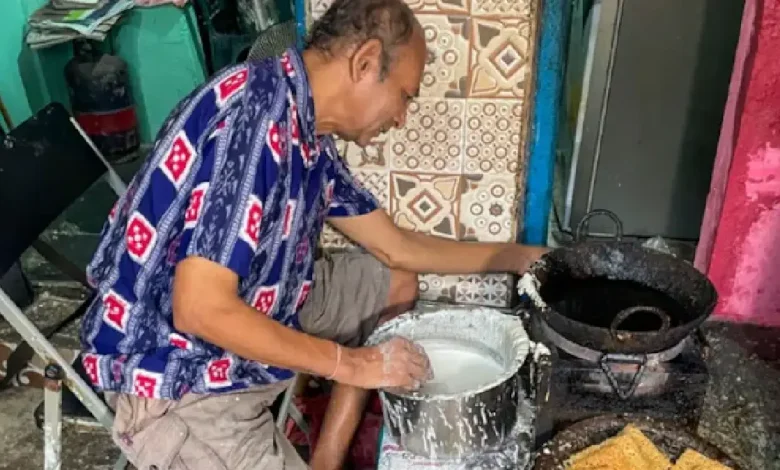A Taste Of History And Heritage : Sambalpur’s 400-Year-Old Sarsatia Sweet Eyes GI Tag

Sambalpur : Odisha, a 160-year-old sweet shop has preserved a culinary tradition that dates back to the mid-19th century. Owned by Prabhulal Gupta, the shop has kept alive the art of making Sarsatia, a rare dessert locals believe exists nowhere else in the country. Unlike conventional Indian sweets, Sarsatia is made using resin from the Ganjer tree a material rarely associated with desserts.
Historical records trace the delicacy back to the 16th century, when it was a household favourite in western Odisha. Families recall soaking it in milk or offering it to Maa Samaleswari during festivals like Dussehra, highlighting its deep cultural ties. Efforts to secure a Geographical Indication (GI) tag for Sarsatia have gained momentum. A GI tag, much like the recognition given to Darjeeling tea or Banarasi sarees, protects products that are unique to a region and ensures that only authentic producers can use the name.
For the people of Sambalpur, Sarsatia is more than a dessert it is nostalgia wrapped in tradition. It evokes memories of community fairs, festive offerings, and family rituals. Even today, older generations remember the pride of serving Sarsatia at gatherings as a symbol of hospitality and identity.
The sweet faces challenges. Awareness about Sarsatia is still limited outside Odisha. Its preparation relies on the resin of the Ganjer tree, which is not widely available. And modern tastes, especially amongst younger consumers, often lean toward mass-produced sweets. As Prabhulal Gupta, whose family has been making Sarsatia for three generations, explains: “Discussions are on about the GI tag.
Read Also : ₹2200 Crore Betting Racket : Gujarat Police Arrest Harshit Jain, Arrest Boosts Probe Into Mahadev Network




